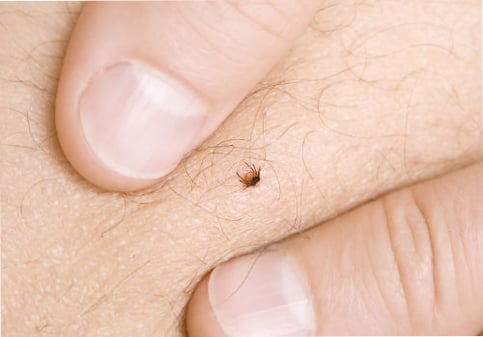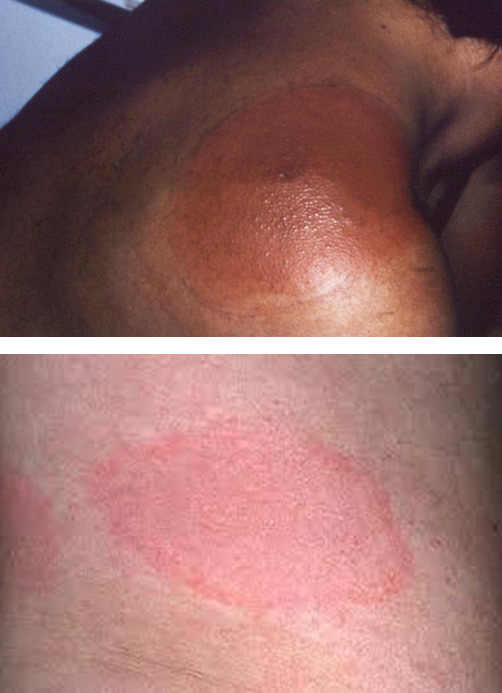The Duty of Lymecare Alliance ahead of time Lyme Condition Research
The Duty of Lymecare Alliance ahead of time Lyme Condition Research
Blog Article
Lyme Condition Recognition-- Know the Symptoms and Keep Protected
Lyme disease stays a considerable public health problem, particularly in regions where ticks are widespread. Early recognition of its signs and symptoms, such as the characteristic breakout and flu-like indications, is essential for efficient intervention. Comprehending the threat aspects associated with transmission can notify much better precautionary approaches. As outdoor tasks enhance, so does the requirement for extensive awareness and security steps (Lymecare Alliance). What particular steps can individuals require to safeguard themselves against this often-overlooked condition, and how can communities boost their general feedback?
Recognizing Lyme Condition
Lyme condition, a widespread tick-borne illness, is triggered by the bacterium Borrelia burgdorferi. This illness is primarily sent to human beings through the bite of infected black-legged ticks, frequently referred to as deer ticks. The geographical distribution of Lyme condition is largely concentrated in the northeastern, north-central, and Pacific seaside areas of the United States, although instances have actually been reported in various other locations also.
The life cycle of the tick plays an essential role in the transmission dynamics of Lyme condition. Human exposure to ticks is specifically elevated in verdant or woody locations, specifically during warmer months when ticks are most energetic.
Comprehending the ecology of Lyme condition is crucial for efficient avoidance techniques. Awareness of tick environments and actions can considerably lower the possibility of attacks. In addition, public education and learning on proper tick removal strategies and the importance of individual safety measures can help alleviate the threat of having this facility and potentially debilitating disease.
Usual Signs And Symptoms to Identify
Identifying the usual signs and symptoms of Lyme illness is vital for very early medical diagnosis and treatment. The initial symptom frequently includes a characteristic skin breakout called erythema migrans, which looks like a red round patch with a central cleaning, appearing like a "bull's- eye." This rash commonly establishes within 3 to 30 days after a tick bite and can vary in size.
Along with the breakout, individuals may experience flu-like signs, including fever, cools, exhaustion, muscle pains, and joint pain. These signs can be misleading, as they prevail to lots of other ailments. If left unattended, Lyme disease can progress to extra severe manifestations, consisting of neurological concerns such as meningitis, facial palsy, or cognitive disabilities.
Prompt treatment can prevent the development of the condition and decrease the risk of long-term problems. Watchfulness is crucial in determining and resolving the symptoms connected with Lyme condition.

Risk Variables and Transmission
Comprehending the threat aspects and settings of transmission connected with Lyme disease is necessary for effective avoidance. Lyme condition is mostly transmitted with the bite of contaminated black-legged ticks, frequently understood as deer ticks. These ticks thrive in wooded, grassy, and brushy areas, making outside activities in such environments a significant danger aspect for transmission.
Individuals that participate in exterior leisure tasks such as camping, gardening, or walking are most likely to encounter these ticks. Furthermore, staying in or going to areas where Lyme disease is endemic, including components of the northeastern, north-central, and Pacific coastal areas of the USA, enhances visit this site exposure danger. Specific professions, such as landscape design, farming, and forestry, also posture enhanced risks because of prolonged exterior direct exposure.
Furthermore, the life process of the tick, which requires details ecological problems, impacts transmission dynamics. Variables such as environment adjustment, which influences tick populations and environments, can additionally exacerbate risk. Understanding these factors is essential for people to identify their potential direct exposure and take necessary preventative measures to reduce their risk of contracting Lyme disease.
Effective Avoidance Methods
Consistently implementing reliable avoidance approaches is crucial for decreasing the risk of Lyme disease. The very first line of defense is to prevent areas understood for high tick populations, especially wooded and grassy atmospheres. When outdoor tasks are inevitable, wearing protective apparel is important. Lengthy sleeves, website link long trousers, and snugly woven fabrics can aid minimize skin exposure. In addition, light clothing makes it less complicated to identify ticks.

Educating family members and friends about these avoidance strategies fosters neighborhood recognition and vigilance, additional reducing the likelihood of Lyme disease transmission. By adopting these procedures, people can successfully safeguard themselves from the threats associated with Lyme illness.
Value of Early Discovery
Very early detection of Lyme illness considerably influences therapy results and can prevent the development of the health problem - Lymecare Alliance. The beginning of Lyme condition are usually marked by flu-like signs, including high temperature, exhaustion, and the particular erythema migrans rash. Identifying these signs promptly permits timely treatment, which generally involves a training course of antibiotics. When treated early, most individuals recover completely without lasting problems.
On the other hand, delayed diagnosis can lead to much more Bonuses severe indications of the condition, including cardiac and neurological problems, which can be more challenging to deal with and may result in prolonged health problems. Late-stage Lyme illness may require prolonged antibiotic treatment and can cause persistent signs and symptoms, significantly affecting lifestyle.
On the whole, enhancing recognition around the very early indicators of Lyme disease is important for reliable administration and prevention of even more significant health and wellness consequences. Early intervention is not just valuable for the additionally crucial however specific in minimizing the total problem of Lyme illness in the community.
Verdict
In recap, increasing awareness of Lyme Illness is essential for promoting very early discovery and efficient avoidance. Eventually, a cumulative effort to remain informed and vigilant against Lyme Illness can boost area health and wellness and minimize the impact of this potentially major health problem.
Lyme illness continues to be a substantial public wellness concern, specifically in areas where ticks are common.The life cycle of the tick plays a vital duty in the transmission characteristics of Lyme disease.Understanding the risk factors and modes of transmission connected with Lyme illness is vital for effective prevention. Lyme condition is largely transmitted via the bite of infected black-legged ticks, frequently understood as deer ticks. Understanding these elements is essential for individuals to acknowledge their possible direct exposure and take required precautions to minimize their danger of having Lyme illness.
Report this page